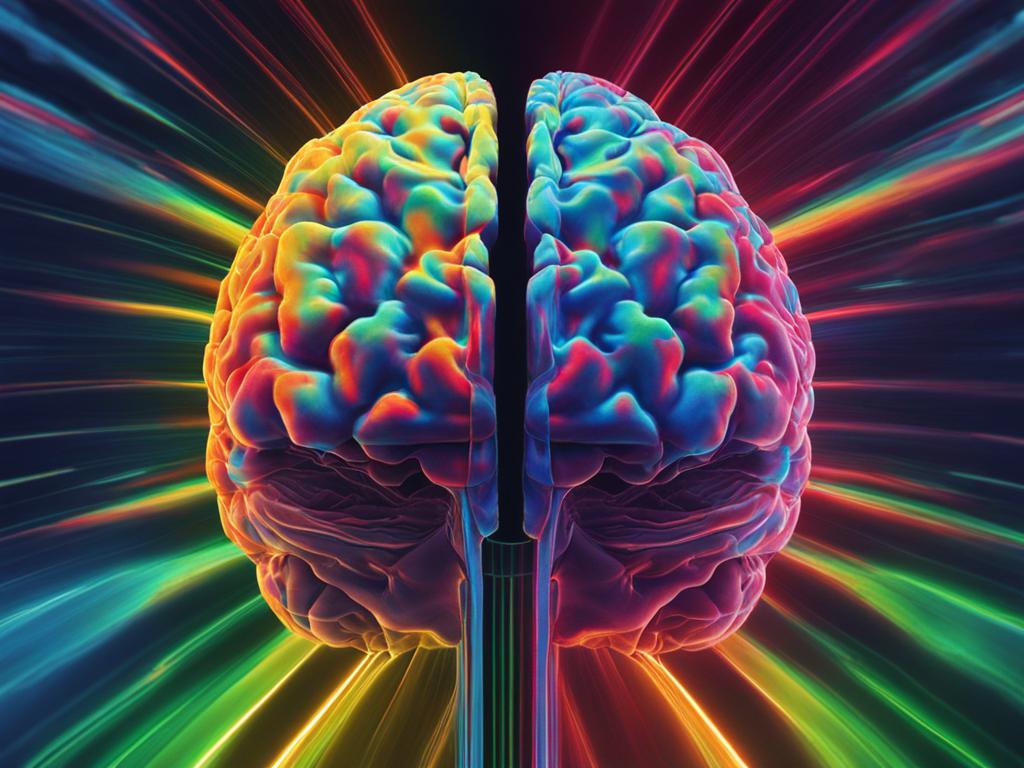The journey to successful weed addiction recovery requires a steadfast commitment to embracing change and adopting healthier habits in one’s life. Overcoming cannabis addiction is a challenging process, but with determination, resilience, and the right support, individuals can achieve lasting change and improved well-being. In this article, we will explore the various aspects of cannabis addiction, along with strategies and resources to help individuals on their journey to recovery.
Key Takeaways
- Recognizing signs of cannabis addiction is crucial for timely intervention and recovery.
- Understanding the science behind marijuana’s effects on the brain can be beneficial in addressing addiction.
- Adopting healthier habits and lifestyle changes plays a significant role in overcoming cannabis addiction.
- Seeking professional help, attending therapy sessions, and joining support groups can greatly enhance the recovery process.
- Sharing personal experiences of triumphing over addiction can inspire and encourage others on their journey to recovery.
Understanding Cannabis: From Ancient Utility to Modern Substance Use
The history of cannabis stretches back centuries, revealing a fascinating journey from ancient utility to modern substance use. Understanding the cannabis sativa history and the evolution of marijuana consumption help shed light on its significance in today’s society.
In ancient times, cannabis was valued for its utility in creating essential items such as rope, fabric, and even as a construction material. The versatile plant found its way into colonial America, where the mandated production of hemp, a low-THC variety of cannabis, further highlights its historical importance.
Though cannabis initially gained recognition for its utilitarian applications, it has since transformed into a modern substance consumed recreationally and medicinally.
Despite its shifting role, marijuana remains an illicit drug under federal law. However, some states have chosen to legalize its use, contributing to ongoing debates surrounding cannabis. As cannabis potency has increased over time, concerns about THC levels surpassing those in the past have risen.
- Understanding cannabis in a historical context provides valuable insights into its present-day status and implications.
- Evolution from ancient utility to modern substance use underlines marijuana’s complex trajectory and the ongoing debates surrounding its use.
- Informed decision-making about cannabis use hinges upon understanding its history, as well as the changes in potency and effects over time.
Observing the growth of the cannabis industry, it’s critical to recognize its roots in Hemp production, Colonial America, and ancient utility. Recognizing the plant’s historical significance and modern implications is paramount for informed discussions on cannabis policy and individual choices.
| Time Period | Cannabis Uses | Hemp Production |
|---|---|---|
| Ancient Era | Rope, fabric, construction material | Widespread, essential to daily life |
| Colonial America | Continued widespread use, low-THC hemp | Mandated, critical for the economy |
| Modern Day | Recreational, medicinal, and illicit use, higher THC levels | Legalized in some states, contentious legislative landscape |
By examining cannabis’s history and evolution, we can better understand its diverse applications, risks, and rewards. As society continues to evolve, so does our discussions surrounding cannabis use.
Recognizing the Signs of Weed Addiction
Identifying the signs of weed addiction is vital for addressing the problem and seeking help early. Cannabis Use Disorder manifests in various physical and psychological symptoms, as well as behavioral changes that can impact daily life. Recognizing when casual use becomes problematic is essential in understanding when concern for cannabis consumption is warranted.

Physical and Psychological Symptoms of Cannabis Use Disorder
Physical symptoms of cannabis use disorder include impaired coordination, difficulty with problem-solving and memory, mood alterations, and decreased appetite. Psychological symptoms can manifest as:
- Anxiety
- Depression
- Paranoia
- Psychosis
- Emotional instability
“Cannabis use disorder can lead to disruptions in daily life, resulting in a lower satisfaction, increased relationship problems, and workplace issues.”
Behavioral Changes and the Impact on Daily Life
Addiction to marijuana can result in significant behavioral changes. Some of these changes and their impacts on daily life include:
- Increased absences at work and decreased productivity
- Relationship difficulties with family and friends
- Compromising personal values and ethics for marijuana use
- Heightened risks of injury or death while driving under the influence
- Withdrawal from hobbies and other activities unrelated to marijuana use
| Behavioral Change | Impact on Daily Life |
|---|---|
| Decreased motivation and ambition | Failure to achieve personal and professional goals |
| Increased secrecy around marijuana use | Eroded trust with significant others and friends |
| Financial difficulties | Debt accumulation and difficulty with budgeting |
| Self-isolation | Limited social interaction and heightened loneliness |
Identifying When Casual Use Becomes a Concern
Casual marijuana use can become a concern when it begins to interfere with an individual’s personal goals, health, and responsibilities. Identifying problematic marijuana use can involve noticing signs such as:
- Missing work due to respiratory illnesses resulting from marijuana use
- Experiencing withdrawal symptoms like irritability, sleeplessness, and restlessness when not using
- An inability to quit or decrease marijuana consumption despite negative consequences
- Prioritizing cannabis consumption over other essential aspects of life
When casual use progresses to compulsive marijuana consumption despite detrimental implications, it is time to address the addiction and seek help to overcome it.
Evaluating the Effects: Health Risks Linked to Chronic Marijuana Use
Chronic marijuana use poses various health risks and addiction health consequences. Through continuous research and studies, experts have discovered a range of potential health concerns linked to prolonged cannabis consumption.
These health risks include respiratory issues, potential heart and lung damage, and an increased likelihood of mental health conditions such as depression, anxiety, and psychosis. Furthermore, cognitive decline is another major concern, particularly when marijuana use begins during adolescence.
Chronic marijuana use carries significant health risks, including respiratory issues, potential heart and lung damage, risk of mental health conditions like depression, anxiety, and psychosis, and potential cognitive decline, particularly when use begins in adolescence.
Respiratory Issues
Consistent marijuana smoking can cause respiratory issues reminiscent of cigarette smoking. Side effects include continuous coughing, phlegm production, and lung inflammation. Prolonged use can even lead to chronic bronchitis and lung infections in some individuals.
Heart and Lung Damage
Regular marijuana use has been linked to an increased risk of developing heart and lung damage. For instance, cannabis smokers face a nearly five-fold increased risk of heart attack within the first hour of smoking. Those with existing heart conditions are particularly vulnerable to the adverse effects of marijuana on cardiovascular health.
Mental Health Conditions
Chronic marijuana use has been associated with the development of mental health issues such as depression, anxiety, and psychosis. Heavy cannabis users face an increased risk of experiencing suicidal thoughts, panic attacks, and hallucinations. It is essential to note that marijuana affects everyone differently, with some users more susceptible to these mental health issues than others.
Cognitive Decline
Potential cognitive decline is an alarming health risk for those who start using marijuana in their adolescent years. Studies have shown a significant decrease in IQ points among heavy marijuana users who began smoking during their teenage years and continued into adulthood. This decline is less prominent in individuals who, although consuming marijuana frequently, only start during their adulthood.
| Health Risks | Effects |
|---|---|
| Respiratory Issues | Continuous coughing, phlegm production, lung inflammation, chronic bronchitis, lung infections |
| Heart and Lung Damage | Increased risk of heart attack, aggravated existing heart conditions |
| Mental Health Conditions | Increased risk of depression, anxiety, psychosis, suicidal thoughts, panic attacks, hallucinations |
| Cognitive Decline | Decreased IQ points, particularly in heavy users starting during adolescence |
Understanding and evaluating the effects of marijuana on physical and mental health serves as a crucial step in raising awareness and promoting preventative measures against addiction. With this knowledge, individuals can make informed choices in regards to their cannabis consumption and better recognize the potential dangers associated with chronic marijuana use.
The Science Behind Addiction: How Marijuana Affects the Brain
Delving into the science behind addiction can shed light on the complex relationship between marijuana and the brain. The psychoactive effects of marijuana are predominantly caused by the compound delta-9-tetrahydrocannabinol (THC), which affects the brain by interacting with specific receptors called cannabinoid receptors.
These cannabinoid receptors are an integral part of the endocannabinoid system, a signaling network that plays a vital role in modulating various brain functions related to mood, memory, pain perception, and appetite. The following points provide a comprehensive understanding of the marijuana brain impact, THC effects, and cannabinoid receptors:
- Activation of cannabinoid receptors: When THC binds to cannabinoid receptors, it triggers a series of biochemical reactions that ultimately lead to the characteristic “high” experienced by marijuana users. The two primary types of cannabinoid receptors in the brain are CB1 and CB2.
- Altered perceptions and mood changes: The activation of CB1 receptors in the brain is primarily responsible for the psychoactive effects of THC. This interaction can cause altered perceptions of time and space, altered thought patterns, heightened sensory experiences, and mood changes such as euphoria or anxiety.
- Impaired coordination and problem-solving: THC’s interaction with the endocannabinoid system can also result in impaired coordination, difficulty with complex problem-solving, and short-term memory loss.

Beyond the immediate effects of THC on cannabinoid receptors, prolonged and frequent marijuana use has been associated with changes in brain structure and function. These alterations are especially concerning for adolescent users since their brains are still in a crucial stage of development.
“The relationships between marijuana use and the brain are complex and depend on multiple factors such as frequency and duration of use, the potency of the marijuana used, and the age at which an individual began using.”
In conclusion, understanding the science behind addiction and the marijuana brain impact is crucial for promoting awareness of the short-term and long-term consequences of marijuana use. By educating ourselves on the intricacies of THC effects and cannabinoid receptors, we can foster informed decision-making and support healthy lifestyle choices.
Mapping the Road to Recovery: Effective Recovery Strategies
Overcoming cannabis disorder requires a combination of determination and the right approach. A wide range of effective recovery strategies is available, which can help individuals map their recovery road and achieve lasting success. These include self-help programs, professional addiction treatment plans, and various therapy types, such as cognitive-behavioral therapy and motivational incentives. The key to success lies in committing to change, overcoming denial, and focusing on the reasons for recovery.
“Recovery is not a one-size-fits-all process. Each person has their unique journey, and what works for one may not work for another. The important thing is to commit to change and find the best strategy that suits your needs.”
There are several essential steps to effectively overcoming cannabis disorder:
- Recognize the problem and face the reality of addiction.
- Seek support from friends, family, or professional therapists to help you understand the roots of your cannabis use and the emotions or triggers driving it.
- Develop a personalized and structured plan for the road to recovery, using the most appropriate strategies according to your needs and circumstances.
- Stick to your plan and remain patient, understanding that setbacks may happen but should not discourage you from continuing your journey to recovery.
- Learn from challenges and use them to strengthen your commitment and refine your recovery strategies.
| Recovery Strategy | Description | Key Benefits |
|---|---|---|
| Self-help programs | Structured programs providing guidance, tools, and resources for individuals to work on their recovery independently or in peer support groups (e.g., Marijuana Anonymous). | Flexibility, accessibility, and cost-effectiveness. |
| Professional addiction treatment | Individualized treatment plans provided by trained addiction specialists that may include medical detoxification, therapy, medication management, and ongoing support. | Comprehensive, expert guidance, and support in navigating the complexities of addiction recovery. |
| Cognitive-behavioral therapy (CBT) | A therapeutic approach focusing on identifying and changing unhelpful thoughts, beliefs, and behaviors surrounding cannabis use. | Effective in addressing the root causes of addiction and developing healthy coping mechanisms. |
| Motivational incentives | Techniques that use rewards or positive reinforcement to encourage progress and adherence to recovery goals. | Practical, goal-oriented, and easy to implement as part of a recovery plan. |
Ultimately, it is crucial to recognize that each person’s journey to recovery is unique. What works for one person may not work for another. However, being prepared with various effective recovery strategies can maximize the chances of overcoming cannabis disorder and living a healthier, happier life.
From Addiction to Advocacy: Personal Success Stories and Insights
Overcoming weed addiction can be a challenging journey, but the transformation from addiction to advocacy is inspiring and powerful. Hearing personal success stories can empower others who are struggling with their own weed addiction and provide invaluable lessons learned along the way. In this section, we will discuss the triumphs over weed addiction and the importance of sharing recovery experiences to inform and inspire others.

Lessons Learned and Triumphs Over Weed Addiction
Each individual’s journey to overcome weed addiction is unique, but there are several common themes that emerge from their experiences. Some have found solace and support in therapy and peer support groups, while others have relied on sheer determination and willpower. The following are a few examples of lessons learned and triumphs achieved during their path to recovery:
- Accepting responsibility and ownership of one’s actions is an essential first step towards change.
- Identifying the underlying reasons for using weed can provide valuable insights into triggers, enabling better management and coping strategies.
- Setting concrete, realistic goals helps maintain focus, motivation, and a sense of achievement during the recovery process.
- Building a strong support network of friends, family, and professionals can be crucial in sustaining progress and preventing relapse.
“I realized that the key to my recovery was accepting that I had a problem, seeking help, and persevering through tough times. It wasn’t an easy journey, but in the end, it was worth it.”
How Sharing Experiences Can Inform and Inspire Others
Sharing experiences of triumph over weed addiction serves multiple purposes. For those who have successfully navigated the challenges, it reinforces their achievements and reaffirms their commitment to maintaining a weed-free life. Additionally, it offers invaluable insights to those still battling dependence, fellowshipping in the process and fostering a sense of community. The act of sharing also empowers those in the early stages of recovery by providing real-life examples of success, offering much-needed hope and inspiration.
| Benefits of Sharing Experiences | Examples |
|---|---|
| Inform | Sharing practical advice on coping strategies, habits for a healthier lifestyle, and effective treatments. |
| Inspire | Personal success stories that demonstrate resilience and recovery from weed addiction, promoting optimism and hope for those still struggling. |
| Community Building | Promoting connection and mutual support among those in different stages of recovery, encouraging unity and strength through shared goals and experiences. |
By embracing the power of storytelling and sharing personal experiences, individuals who have triumphed over weed addiction can become advocates for change. The insights they offer can inform and inspire others, reinforcing the importance of peer support and empowering those seeking to overcome their own addiction.
Seeking Help and Support: The Role of Therapy and Community in Recovery
When it comes to pursuing a successful weed addiction recovery, seeking help and support is essential. Incorporating therapeutic interventions and connecting with a recovery community can significantly increase an individual’s chances of overcoming cannabis addiction. No one has to face this journey alone, and leveraging the expertise of professionals and the empathy of peers can make all the difference.
The role of therapy in recovery cannot be overstated. The right therapeutic approach equips individuals with the necessary tools and resources to conquer addiction. Cognitive-behavioral treatment, for instance, helps to identify and alter negative thought patterns and behaviors, while motivational incentives motivate individuals to stay committed to their recovery path. Each person’s therapeutic plan should be tailored to their unique needs and goals, ensuring personalized and effective support.
Building a supportive recovery community is another vital aspect of overcoming weed addiction. Whether it’s through group therapy or by connecting with others who have walked a similar path, the camaraderie and understanding shared between individuals who have faced addiction challenges is invaluable. Support groups provide a safe space for people to share their experiences, offer encouragement, and discuss coping strategies that have worked for them. This sense of belonging and accountability can truly contribute to long-lasting change and a healthier future for all.
FAQ
What are some key aspects of successful weed addiction recovery?
Key aspects of successful weed addiction recovery include embracing change, cultivating healthier habits, overcoming dependency on cannabis, and committing to lifestyle adjustments. It is essential for individuals to be determined and resilient throughout their journey to recovery.
How has the use of cannabis evolved over time?
Cannabis has evolved from being valued for its utility in making items like rope, fabric, and construction material to being a modern substance used for recreational and medicinal purposes. The increase in potency over the years has raised concerns, as THC levels far surpass those found in the past.
What are the physical and psychological symptoms of Cannabis Use Disorder?
Physical and psychological symptoms of Cannabis Use Disorder include impaired coordination, difficulty with problem-solving and memory, mood alterations, and decreased appetite. These symptoms can disrupt daily life and contribute to lower satisfaction, increased relationship problems, and workplace issues.
How can one identify when casual cannabis use becomes a concern?
Casual use becomes problematic when it interferes with personal goals, health, and responsibilities. Signs such as missing work due to respiratory illnesses or experiencing withdrawal symptoms like irritability and sleeplessness when not using indicate that casual use may be becoming a concern.
What are some health risks linked to chronic marijuana use?
Chronic marijuana use carries significant health risks, including respiratory issues, potential heart and lung damage, risk of mental health conditions like depression, anxiety, and psychosis, and potential cognitive decline, particularly when use begins in adolescence.
How does marijuana affect the brain?
Marijuana affects the brain through its activation of cannabinoid receptors, part of the endocannabinoid system, which influences brain functions. THC’s interaction with this system leads to the “high” along with altered perceptions, mood changes, and impairments in coordination and problem-solving.
What are some effective recovery strategies for overcoming cannabis use disorder?
Effective recovery strategies for overcoming cannabis use disorder include self-help, professional treatment, cognitive-behavioral therapy, and motivational incentives. Both individuals with treatment-assisted and natural recoveries attribute their success to committing to change, overcoming denial, and focusing on reasons for recovery.
How can sharing personal success stories and insights help others struggling with weed addiction?
Sharing personal success stories and insights can offer encouragement and support to others struggling with addiction. It fosters community, shows that recovery is possible, and provides valuable information that can inform effective interventions.
What is the role of therapy and community support in addiction recovery?
Therapy and community support play integral roles in addiction recovery. Approaches including cognitive-behavioral treatment, motivational incentives, and reliance on social support systems such as group therapy are vital, providing structure, encouragement, and coping strategies for those undergoing treatment.
Source Links
- https://www.hazeldenbettyford.org/addiction/marijuana-symptoms
- https://granitemountainbhc.com/addiction-programs/marijuana/
- https://ascpjournal.biomedcentral.com/articles/10.1186/s13722-018-0118-0
Author Profile

Latest entries
 BlogFebruary 20, 2024I Just Found the Ultimate Clog-Free Vape Cartridge! (Yes, They Exist!)
BlogFebruary 20, 2024I Just Found the Ultimate Clog-Free Vape Cartridge! (Yes, They Exist!) BlogJanuary 16, 2024In the Clouds with Creativity: A Blunt Encounter with Montreal’s Fluid Art Maestro
BlogJanuary 16, 2024In the Clouds with Creativity: A Blunt Encounter with Montreal’s Fluid Art Maestro BlogDecember 25, 2023Sativa: Enhancing Outdoor Adventures
BlogDecember 25, 2023Sativa: Enhancing Outdoor Adventures BlogDecember 25, 2023Enhancing Memory with Sativa
BlogDecember 25, 2023Enhancing Memory with Sativa





